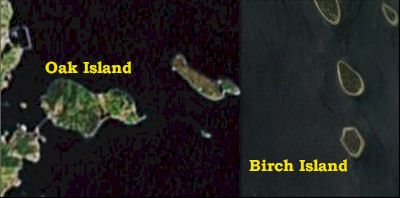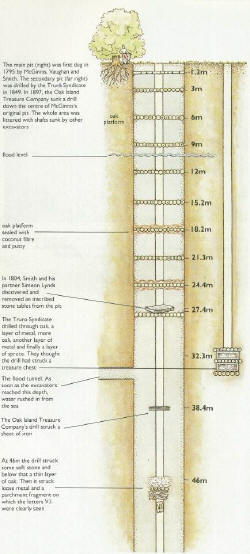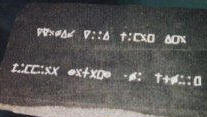Oak Island Money Pit MysteryThere is an island off the east coast of Nova Scotia, Canada, in Mahone Bay, called Oak Island. On this island there was discovered some very strange diggings or, rather, bury-ings and has been a mystery for over 200 years that is yet to be solved. Known History of Money PitA young man named Daniel McGinnis, 16, was exploring the island in 1795 and stumbled upon a strange depression in the sod beneath some oak trees. He began digging and, with the help of a couple other friends (John Smith, age 19 and Anthony Vaughan, age 16,) the three boys began using picks and shovels and having grand visions of pirate treasure. Four feet down they found a layer of flagstones not native to the area. Then ten feet further down they found a platform of oak logs closely set together, embedded in the walls of the shaft. Now being certain that they had stumbled upon a long-lost pirate's treasure trove they dug furiously. However, below the oak platform they found only more earth. At a depth of 20 feet they came across yet another oak platform, and then again, another at 30 feet. By this time the pit was so deep that the boys could not easily remove the logs. Discouraged by weeks of fruitless digging, the young treasure hunters abandoned the project. But they did not forget. The boys never found anything of worth except more and more mysterious circumstances. They involved more people and investors and over the centuries many other individuals and companies have drilled to depths of hundreds of feet and found nothing except more materials that do not belong hundreds of feet below the earth in Nova Scotia, Canada (like a flagstone with foreign letters carved into the top, oak, coconut fiber, putty, iron, even a torn piece of parchment with the letters "v" and "i" written on it.) Certainly a world class mystery. It is very interesting and I have found much more about it here. Now that you have some background on it, I want to bring up something new. For many years, the flagstone (stone tablet found 90 feet down in the pit) was thought to be translated into something like: "40 feet below 2 million pounds (GBP) are buried." |
click for larger
version of cross section |
|
The accepted
translation of the flagstone is this: But now, there are other ideas about this translation. Read below: |
New ideas about translating the Oak Island Flagstone
| Keith Ranville has come up with
a differing translation from the generally accepted one. He is of
native Canadian descent and has used his native background to find a message
on the stone. The message concerns an island two islands to the east
of Oak Island (Birch Island) which has a distinctive triangle carved into
the north side of the island. In an email to us, Ranville says: "the forty symbols explain about a Island two Islands east of Oak Island called Birch Island, on the north end of birch Island the impression of a triangle is there. It takes more than half of the Island. You can see the triangle |
 |
| from Google satellite (Google Earth from which we obtained these photos), the triangles that were inscribed on the stone tablet refer to the triangle on Birch Island the rest of the symbols are engineering instructions or explain what goes on in the triangle area on Birch Island there is something of great heritage value there that will interest everyone. " |
![]()
More about the new translation for the Money Pit's Flagstone. Click here.
![]()


